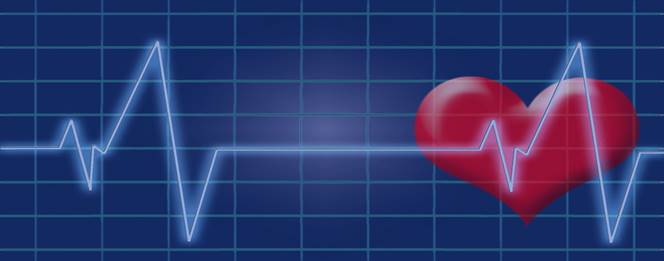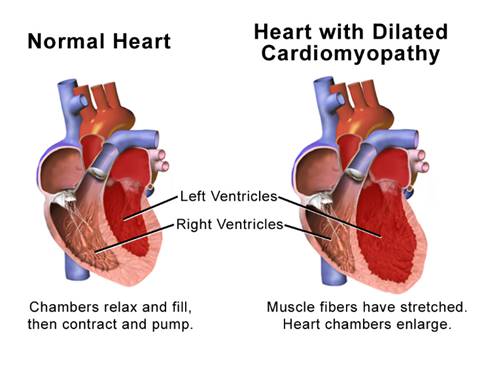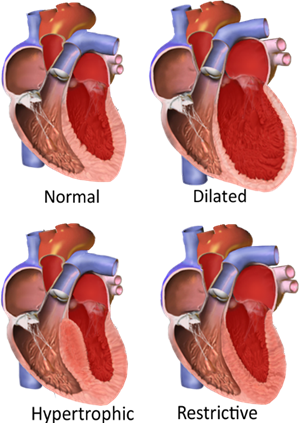4.19.1 Lesson: Heart Disease
- Due No due date
- Points 100
- Questions 4
- Time Limit None
- Allowed Attempts Unlimited
Instructions
HEART DISEASE

Objectives:
G.2 – Students will analyze personal risk factors for diabetes, heart disease, and stroke.
G.5 – Students will identify health-related decisions that contribute to heart disease, stroke, diabetes, and other chronic diseases and conditions.
Vocabulary
|
Disease |
A disease is any illness or sickness that is characterized by specific signs and symptoms. |
|
Heart Disease |
Heart disease describes a range of conditions that affect your heart. Diseases under the heart disease umbrella include blood vessel diseases, such as coronary artery disease; heart rhythm problems (arrhythmias); and heart defects you're born with (congenital heart defects), among others. |
|
Cardiovascular Disease |
Cardiovascular disease generally refers to conditions that involve narrowed or blocked blood vessels that can lead to a heart attack, chest pain (angina), or stroke. |
Disease
Earlier in this course, you learned about health and wellness and the different human body systems. When you do not take care of your body, you can cause damage to different body systems, and that damage can result in disease. A disease is any illness or sickness that is characterized by specific signs and symptoms. Take a look at the Mayo Clinic’s symptom checker (by clicking here) to get an idea of how different symptoms can indicate different conditions or diseases.
Heart Disease
The term heart disease refers to several types of heart conditions. The most common type of heart disease in the United States is coronary artery disease, which affects the blood flow to the heart. Decreased blood flow can cause a heart attack. Other heart diseases and related conditions include heart rhythm problems (arrhythmias including atrial fibrillation), heart defects you are born with (congenital heart defects), heart failure, hypertension (high blood pressure), cardiomyopathy, and others.
According to the Centers for Disease Control and Prevention (CDC), heart disease is the leading cause of death in the United States, and this includes both men and women as well as people from most ethnic backgrounds. The exception is that heart disease is the second leading cause of death in the United States for Asian Americans, Asian Pacific Islanders, American Indians, and Alaska natives; the leading cause of death for these ethnic groups is cancer (which will be discussed in a future lesson in this module).
Approximately 610,000 Americans die from heart disease every year, and that accounts for one in every four deaths! In the United States, every minute, someone dies from an event related to heart disease; someone has a heart attack every 42 seconds.
Then a look at the CDC’s interactive atlas at the link here (you will not be tested on the specific data in the atlas, but you do need to review the information).
Types of Heart Disease
There are several different types of heart disease, and some of the more common heart diseases are discussed below.
Coronary artery disease (CAD) is the most common type of heart disease in the US. CAD is caused by plaque buildup in the walls of the arteries that supply blood to the heart (called coronary arteries) and other parts of the body. Plaque is made up of deposits of cholesterol and other substances in the artery. Plaque buildup causes the inside of the arteries to narrow over time, which could partially or totally block the blood flow. This process is called atherosclerosis. Too much plaque buildup and narrowed artery walls can make it harder for blood to flow through your body. When your heart muscle doesn’t get enough blood, you may have chest pain or discomfort, called angina. Angina is the most common symptom of CAD. Over time, CAD can weaken the heart muscle. This may lead to heart failure, a serious condition where the heart can’t pump blood the way that it should. An irregular heartbeat, or arrhythmia, also can develop.
Heart attack, also called a myocardial infarction, in often the result of CAD and occurs when a part of the heart muscle doesn’t receive enough blood flow because of blockage, and that causes damage to part of the heart muscle, or part of the heart muscle dies. The more time that passes without treatment to restore blood flow, the greater the damage to the heart muscle. One of five heart attacks is silent—the damage is done, but the person is not aware of it. Even though CAD is the main cause of heart attacks, there are other causes. A less common cause is a severe spasm, or sudden contraction, of a coronary artery that can stop blood flow to the heart muscle.
Cardiomyopathy represents a collection of diverse conditions of the heart muscle. These diseases have many causes, symptoms, and treatments and can affect people of all ages and races. When cardiomyopathy occurs, the normal muscle in the heart can thicken, stiffen, thin out, or fill with substances the body produces that do not belong in the heart muscle. As a result, the heart muscle’s ability to pump blood is reduced, which can lead to irregular heartbeats, the backup of blood into the lungs or rest of the body, and heart failure.
Cardiomyopathy can be acquired (developed because of another disease, condition, or factor) or inherited. The cause is not always known. The main types of cardiomyopathy include the following:
Dilated: where one of the pumping chambers (ventricles) of the heart is enlarged. This is more common in males and is the most common form of cardiomyopathy in children. It can occur at any age and may or may not be inherited.

Hypertrophic: where the heart muscle is thickened. This often presents in childhood or early adulthood and can cause sudden death in adolescents and young adult athletes. It is often an inherited condition, and a person may not have any symptoms. If there is a family history of this, other family members can be tested and adjust their activities to reduce the risk of sudden death.
Arrhythmogenic: where the disease causes irregular heartbeats or rhythms. This is often inherited and more common in males.
Restrictive: where the heart muscle is stiff or scarred, or both. It can occur with amyloidosis or hemochromatosis, and other conditions. This is the least common type.
Cardiomyopathy can also occur in children regardless of age, race, and gender, and this is known as pediatric cardiomyopathy. Pediatric cardiomyopathy can be inherited or acquired through a viral infection and sometimes the cause is unknown. It is a frequent cause of sudden cardiac arrest in the young, according to the National Heart, Lung and Blood Institute. Treatment may include medications, changes to physical activity, or surgery. In many cases, early detection and intervention can help to improve outcomes for children.
An arrhythmia is when the heart beats too slowly, too fast, or in an irregular way. Atrial fibrillation, often called AFib or AF, is the most common type of heart arrhythmia. When a person has AFib, the normal beating in the upper chambers of the heart (the two atria) is irregular, and blood doesn’t flow as well as it should from the atria to the lower chambers of the heart (the two ventricles). AFib may occur in brief episodes, or it may be a permanent condition.
Risk Factors
Some of the key risk factors for heart disease are high blood pressure, high LDL cholesterol levels, and smoking. Nearly half of all Americans has at least one of these three risk factors. Other physical conditions and lifestyle choices that increase the risk of developing heart disease include diabetes, being overweight or obese, poor diet, not being physically active, and excessive alcohol use.
In addition to answering questions about what you learned, you will need to list your risk factors for heart disease in the quiz for this lesson. So, take some time to speak with your parents or other family members about what your risk factors are. (These can include high blood pressure, high LDL cholesterol, smoking, being around second-hand smoke, diabetes, being overweight or obese, etc.)

